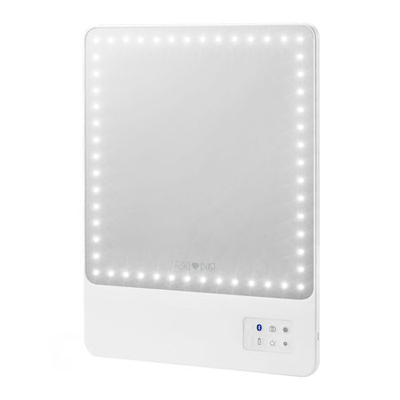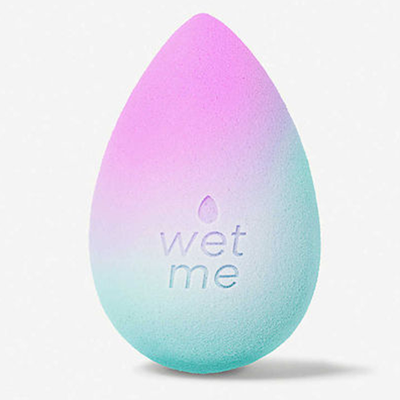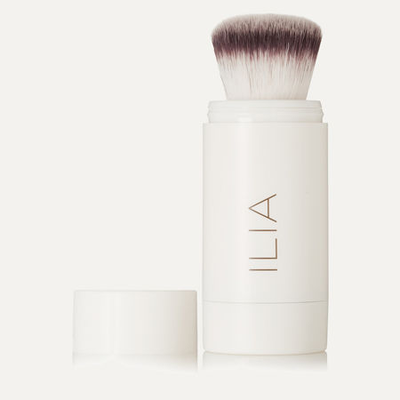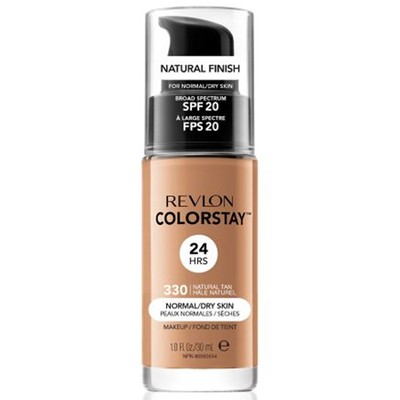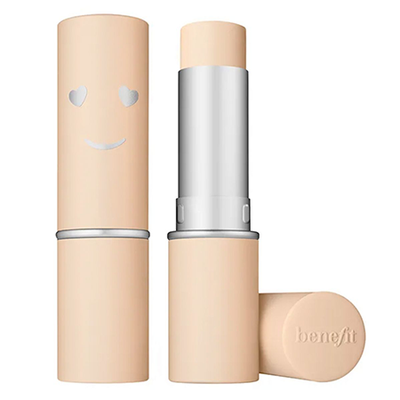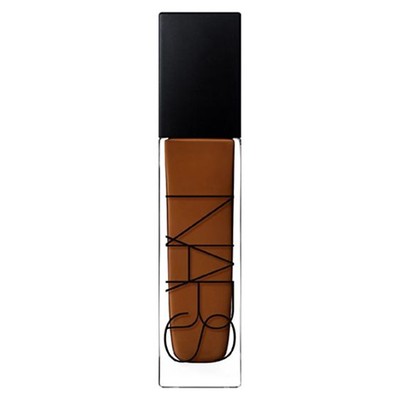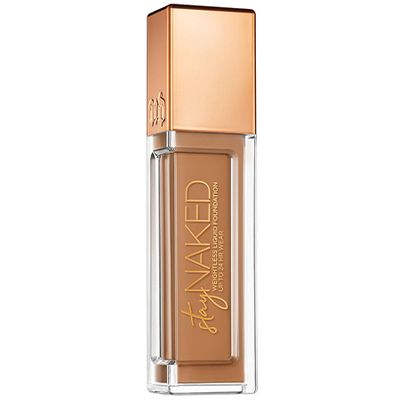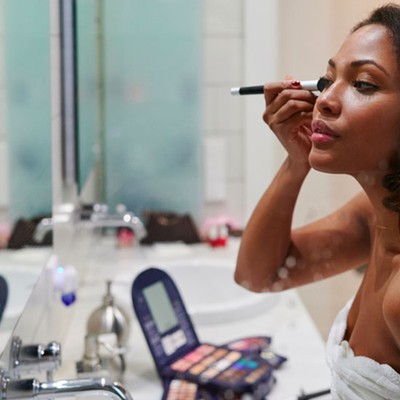
This Is How To Apply Foundation
Get Your Shade Right
“Before you even start applying your base, make sure you’re choosing the right tone and colour,” advises make-up artist Kenneth Soh. “No one should go darker than their natural skin colour – leave the warming up to bronzers rather than your foundation. Try going half a shade lighter to brighten up your complexion, then go in with some depth. That way, your face never looks flat or dull.”
Create A Glowing Base
“People always skip the prep, but it's key to a flawless finish,” explains vegan and cruelty-free make-up artist, Em-J. “Foundation applied to dry skin quickly looks flaky and chalky. Start by applying an appropriate moisturiser for your skin, and let it sink in for five minutes before going in with other products – this will prevent a patchy finish and any pilling, while the cream itself will lend extra dewiness and luminosity.”
Prime As Needed
“Primer isn’t always necessary, but it’s a good idea if your skin absorbs make-up fast,” adds Em-J. “Not only will it even out skin tone and provide a silky-smooth canvas for your base, it’ll ensure your foundation doesn’t slide down by 4pm. The key is applying it in the right way. Use it on hotspots like the forehead, hairline and down each side of your nose to knock down grease, and make sure you use your fingers for application – this will help push product into the skin, rather than leaving it sitting on top.”
Apply Only Where Needed
“Foundation should be applied from the centre of the face outwards for the most natural coverage, thinning it out towards the jawline so it blends seamlessly into the neck and hairline” says Kenneth. “Doing it this way means the areas where you need more coverage (think around the nose and under the eyes) get a flawless and even blend. Try to avoid caking it over your nose – especially if you have freckles.”
Don’t Paint, Buff
“Technique is paramount to making sure your foundation is flawless, as are the right tools,” says Em-J. “You want your base to melt into the skin, rather than just sweeping it on top – the latter will just result in it sitting on the surface. Instead, look for brushes with a flat base and fluffy hairs to buff the formula in. Use a dabbing motion to push the product down, rather than wiping it on and off in the same movement. If brushes aren’t for you, oversized beauty blenders are just as effective, and can help to lift off excess product as you go. Above all, if you see creases starting to form, keep working your formula in and be sure to buff around the jaw and hairline to avoid tidemarks.”
Warm It Up With Your Hands
“This may sound odd, but you should apply foundation like a skincare product,” recommends Kenneth. “Try warming it up in your hands first. This makes the foundation thicker and brings out a higher coverage. Apply it using a massaging, patting motion – as you would a moisturiser. For areas where you need more coverage, use whatever is left on your hand and tap it into the skin, focusing on problematic areas. This way, it blends in beautifully and never sits over the top of the skin like a mask.”
Blot & Set In Place
“To soak up any excess oils, use blotting papers gently over your skin,” says Em-J. “Then, use a lightweight, translucent powder to seal everything in place. You only need the tiniest amount to prevent unwanted sheen, and make sure you use a fan brush to keep application light. Only brush it over the places that get shiny and cause make-up to slip, like the T-zone. To ensure you’re not depositing too much, tap the brush onto the back of your hand so you only get a dusting of product.”
Know What Formulas To Avoid
“As with shades, it’s important to know what textures work for your individual skin type,” adds Kenneth. “The most obvious is if you have greasy skin, then avoid formulas that are too rich or dewy. If you have a shiny T-zone, look for matte foundations or those which have a ‘velvet finish’. Stick to using dewier formulations on the cheeks to create the illusion of glow. You shouldn’t be afraid to combine finishes to tackle different skin problems, either. For more mature skin types, look for cream or liquid formulas – they're more moisture-rich. Avoid powder foundations as these just settle into fine lines and make skin look dry. Combining a radiance-boosting primer with your base is another great way to keep your skin looking fresh and youthful.”
Finally, Never Forget Natural Light
“Always ensure you’re putting your make-up on in as much natural light as possible,” finishes Em-J. “Step out of your bathroom and head to the nearest window. It also goes without saying that you should be using a good, clean mirror. If it comes with lights, even better. It’s the only way to get everything looking even and ensure you've properly blended everything. If you don’t have good lighting at home, it’s worth investing – even if it’s just in a portable ring light.”
Shop Our Edit Of The Best Foundations To Buy Below…
DISCLAIMER: We endeavour to always credit the correct original source of every image we use. If you think a credit may be incorrect, please contact us at info@sheerluxe.com.
